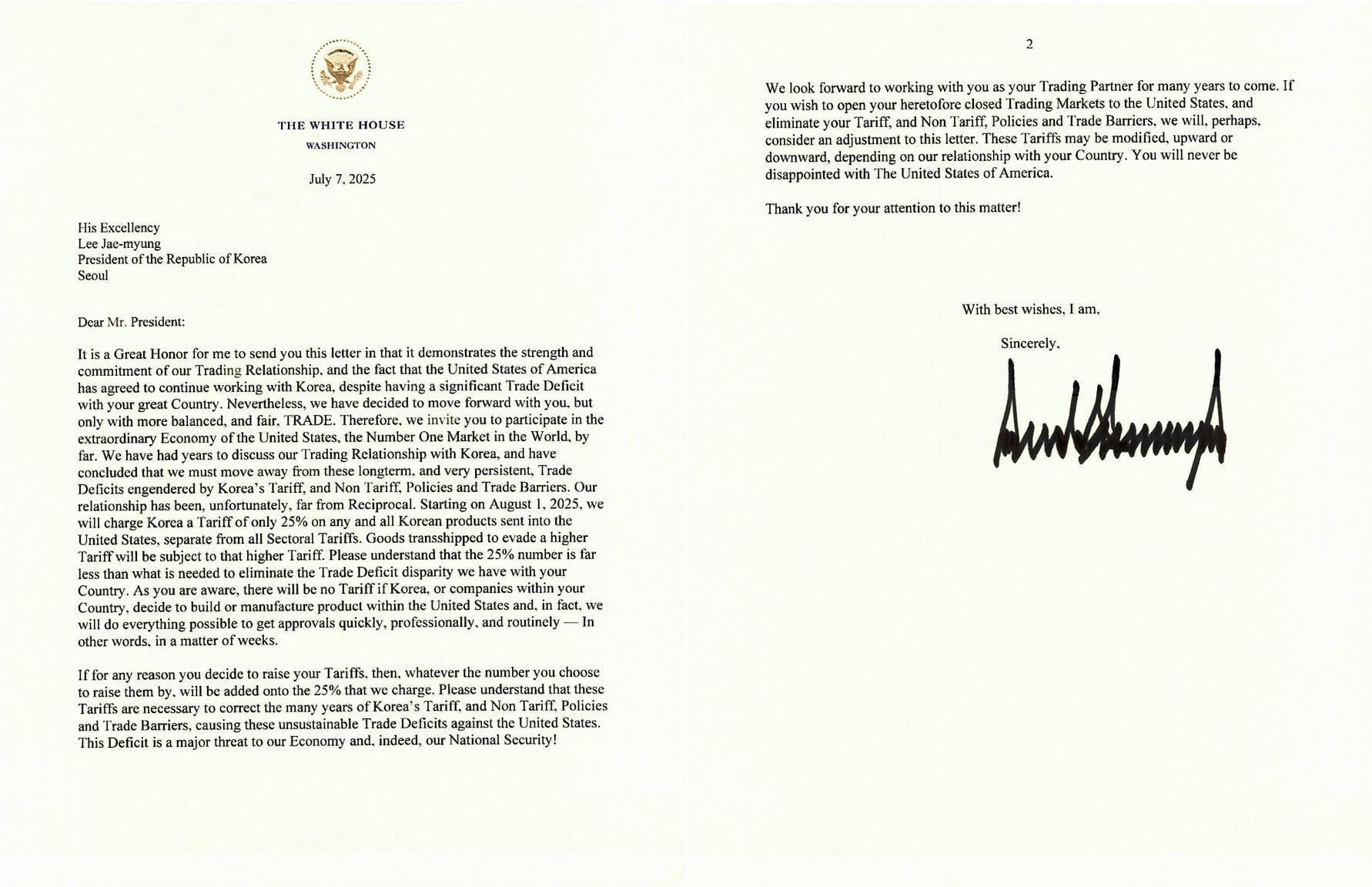Escalation of U.S. Trade Tensions with South Korea
In a significant shift in trade policy, U.S. President Donald J. Trump made a bold statement on July 7, declaring that the United States would impose a 25% reciprocal tariff on all South Korean exports starting August 1. This decision, communicated through a letter addressed to South Korean President Lee Jae-myung and shared on his social media platform, Truth Social, marks a new chapter in the already complicated economic relationship between the two nations.
Trump’s message emphasized the perceived imbalance in trade relations, stating, “Our relationship has been, unfortunately, far from Reciprocal.” He outlined plans to implement a “25% Tariff on any and all Korean products sent into the United States, separate from all Sectoral Tariffs.” The letter also warned that attempts to reroute goods through third countries would result in increased duties, reinforcing the administration’s stance on fair trade practices.
Despite the firm tone, Trump indicated that there could be flexibility if South Korea takes steps to remove existing trade barriers. “If you wish to open your heretofore closed Trading Markets to the United States, and eliminate your Tariff, and Non-Tariff, Policies and Trade Barriers, we will, perhaps, consider an adjustment to this letter,” he wrote. The president suggested that these tariffs could be adjusted—either upwards or downwards—depending on the state of the bilateral relationship.
Additionally, Trump issued a warning against retaliation, stating that any increase in Korean tariffs would be matched and added to the new 25% baseline. This underscores the administration’s commitment to maintaining a strong stance on trade negotiations.
The White House later confirmed that Trump would sign an executive order extending the deadline for reciprocal tariff negotiations, originally set to expire on July 8, by three weeks until August 1. This extension provides Seoul with a limited window for diplomatic efforts, although trade officials on both sides anticipate a tense period of last-minute discussions.
This move is part of a broader strategy by Trump, who also sent a letter to Japanese Prime Minister Shigeru Ishiba, informing Tokyo of a 25% reciprocal tariff—an increase from previous rates. Within hours, similar letters were dispatched to leaders of Malaysia, Kazakhstan, South Africa, and at least two other countries. Some nations, including Myanmar, face higher tariff rates than those announced in April.
White House Press Secretary Karoline Leavitt mentioned that reciprocal tariff letters would be sent to 12 additional countries later in the day but did not reveal their identities. This indicates a coordinated effort to address trade imbalances across multiple regions.
For South Korea, which heavily relies on exports to the U.S., particularly in sectors such as automobiles, semiconductors, and industrial materials, the potential consequences are substantial. The timing of this announcement is politically sensitive for President Lee’s administration, which must navigate domestic expectations while maintaining diplomatic relations.
With the new tariffs set to take effect in less than a month, Seoul faces a critical decision: whether to resist, negotiate, or retaliate. The situation highlights the complex dynamics of international trade and the challenges of maintaining balanced economic relationships in an increasingly interconnected world.







